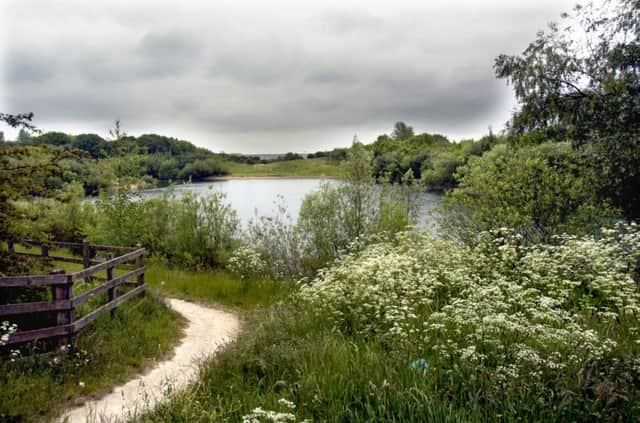Country Diary: Nature reserve is an oasis for wildlife


A pair of otters had been seen diving for fish the previous day, near the island, but unfortunately they had vanished. Otters are now one of our endangered mammals, now protected in England and Wales.
We meet some lovely, friendly folk outdoors. One couple had four small dogs - all rescued from sad circumstances, and doing a great job. A black and white cavalier King Charles spaniel, was accompanied by three adorable Yorkshire terriers, with Polyanna so affectionate! As we left Burton Riggs, the sun broke through the clouds with promise of blue skies ahead.
Advertisement
Hide AdAdvertisement
Hide AdA roadside verge was graced by naked ladies! This seems a popular name for a very early-blooming species of crocus which flaunts pale blue-purple flowers late January into February. Celandines, now kissed by the sun, display golden stars across open grassy places, joining the snowdrops in welcoming spring.
Large flocks of wood pigeons have been observed feeding on young rape leaves, and devouring the black ivy berries which are later developing than most wild berries, and provide welcome nourishment. We counted about 135 in one tree alone.
Meanwhile, we’ve maintained a supply of food at our recently adopted feeding station for birds, at the far end of Seamer Road Mere in the car park. Their menu has included peanuts, coconut shell filled with fatty ingredients, porridge oats, crushed biscuit and knobs of margarine. The chief visitors are tits, including blue, coal, great, and particularly long-tailed tits, and the marsh/willow tits. Our last visit was rewarded by the brief arrival of a nuthatch. An occasional robin and chaffinch call at the bird table.
Seamer Road Mere continues to attract a great gathering of gulls, geese and swans near the jetty, and Mere Cafe. Tufted ducks and cormorants remain, and now three pairs of handsome goosanders.
Advertisement
Hide AdAdvertisement
Hide AdGoosanders are the largest of our sawbills, so-called on account of their serrated bills for holding fish. It’s a winter visitor, and may remain here until March.
Johnson’s Pond, beside Burniston Road, can be relied upon for its herons, and a hunting barn own after 3.30pm. Also present recently were 65 wigeon calling. The male’s penetrating “whee-ooo”, carries for some distance. A large party of the wigeon were grazing the short grass near the water’s edge. They all tend to face the same direction when grazing. What a peaceful scene they present as dusk begins to descend.